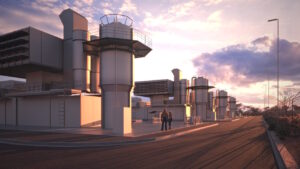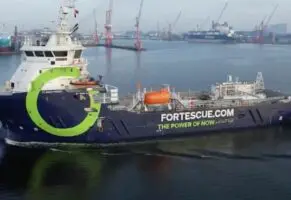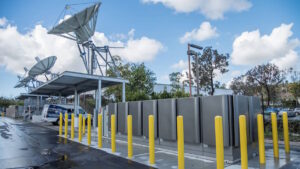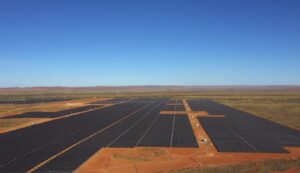The Northern Territory government will fast track the planning process for the massive 10GW Desert Bloom green hydrogen project, that will seek to produce renewable hydrogen using water drawn from the air.
The $15 billion project is being developed by Aqua Aerem in the middle of the Australian outback, and would use huge arrays of solar power to both source its own water and produce hydrogen through electrolysis.
The project is aiming to produce the renewable hydrogen at a cost below US$2 per kilogram by 2027 – a benchmark where hydrogen becomes cost competitive with fossil fuels – with a planned peak production capacity of 410,000 tonnes of hydrogen for domestic and international markets.
The project will start with a 400MW first-stage, which will include an 8MW initial development that will allow Aqua Aerem to further develop the technology before the larger-scale deployment.
The Northern Territory government said that it had given the project ‘major project’ status to help fast track its approvals process and that it would work with Aqua Aerem to identify a suitable location and planning for various the stages of development.
Aqua Aerem plans to produce its first hydrogen from an initial stage of the in 2023, gradually ramping up to full production by 2027.
The announcement follows the same ‘major status’ designation being awarded to the massive Sun Cable project, which plans to build 10GW of solar generation capacity and battery storage capacity in the Northern Territory’s Barkley Region, which includes Tennant Creek.
Aqua Aerem CEO Gerard Reiter said the project would deploy the company’s innovative ‘air-to-water’ technology that will provide the project with a source of water by exacting it out of the air, rather than being dependent on limited fresh water supplies.
The project would consist of modular hydrogen production units, each with an electrolyser capacity of 2MW, producing useful water, heat, electricity, and hydrogen. Aqua Aerem plans to deploy up to 4,000 of the modular units at the Desert Bloom project.
Each 2-megawatt unit consists of a photovoltaic array, a 0.5MW concentrating parabolic trough for heat production, a water production unit that captures water from the air and an electrolyser for converting the water into hydrogen.
The modules use an absorbent material that draws water out of the air, working even in arid environments like central Australia. The solar thermal unit works to extract the water from the material for use in the electrolyser.
As the units are modular, and operate with integrated solar photovoltaics, the units are able to operate without the need for a grid connection.
The company trialled the units in the Northern Territory’s Barkley region for 12 weeks, which the company says successfully demonstrated the performance of the technology.

Reiter said the technology solved several of the challenges facing renewable hydrogen projects, including the integration of solar generation and the sourcing of sustainable water supplies.
“Our air-to-water technology, which solves this previously intractable water supply problem, is a world first; invented and developed here in Australia,” Reiter said.
“This technology will open the door for green hydrogen projects to be located where the best renewable power sources are available, which is generally in the driest areas of the planet.”
“Within two years, Desert Bloom will supply hydrogen for power generation in the NT, and within five years, it will produce green hydrogen for export at less than $US2 per kg,” Reiter added.
By locating the project in Tennant Creek, Aqua Aerem says it would be possible to utilise existing gas pipeline infrastructure that links the township, located around 900km south of Darwin, to Asian gas markets. It would also give the project access to some of Australia’s – and the world’s – best solar resources.
“The NT is the perfect place for this project, with the best solar conditions in the world, existing infrastructure that can be repurposed for hydrogen, and a strategic location close to the big Asian demand centres,” Reiter said.
Aqua Aerem says the project at its peak would create up to 1,000 construction jobs and 120 full-time ongoing roles. The project’s first stage would create an estimated 100 full-time construction jobs and 6 full-time jobs for ongoing operations.
Chief minister of the Northern Territory, Michael Gunner, said the project would help establish the territory as a significant global supplier of renewable hydrogen.
“We are supporting a world-leading renewable hydrogen project, in technology that captures water from the atmosphere in arid environments,” Gunner said.
“With one of the best solar resources in the world – and the development of projects like Desert Bloom – the Territory will play a leading role in the emerging renewable hydrogen market,” Gunner said.
The Desert Bloom project is being financially backed by Sanguine Impact Investment, which has committed $1 billion in capital for the project’s initial development and says it has already secured a co-investment commitment from a major Japanese utility and an early-stage off-take agreement with Territory Generation.
Territory Generation is expected to use the supply of hydrogen for electricity generation, with Reiter telling RenewEconomy that the off-take agreement provided an early domestic customer help underpin the early stages of the hydrogen project.







